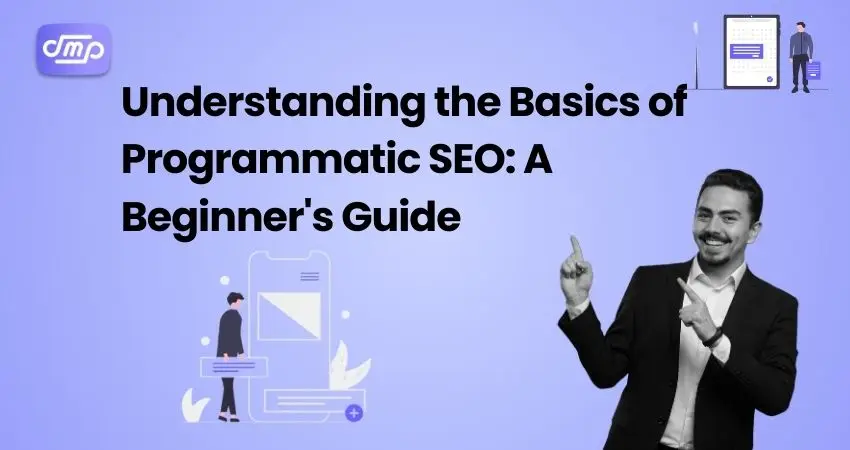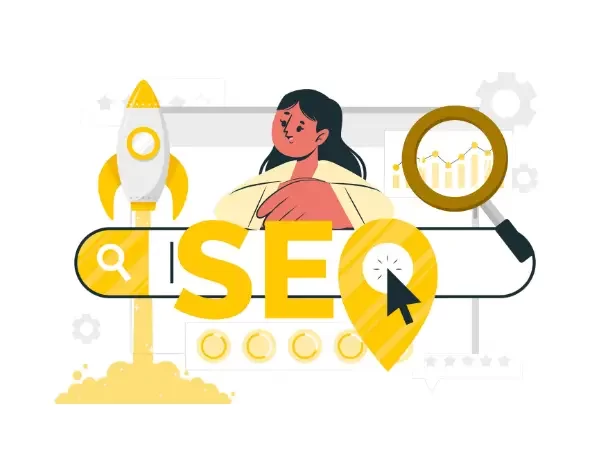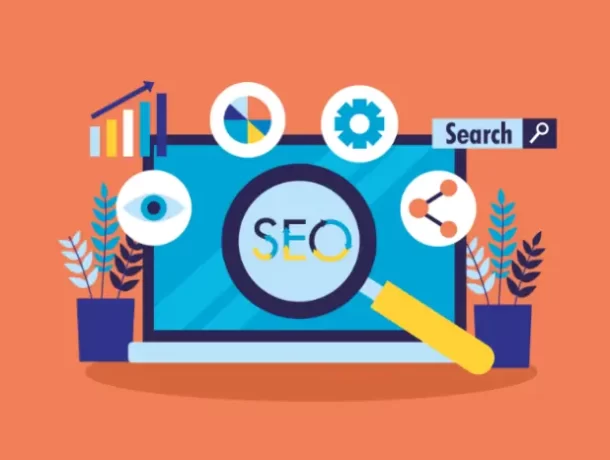
- September 3, 2024
- Digital Marketing, seo
- Search Engine Optimisation (SEO)
Table of Contents
In the ever-changing digital marketing landscape, search engine optimization (SEO) is still a vital component for driving organic traffic to websites. However, as the complexity of online material increases, traditional SEO strategies can become time-consuming and difficult to scale, particularly for huge websites with hundreds of pages. This is where programmatic SEO comes in, changing the way firms approach optimization by automating several components of the process.
It entails employing algorithms and software to automate operations like keyword research, content generation, and link building on a broad scale, allowing firms to maintain a strong online presence without manually optimizing each page. Understanding and applying Programmatic SEO allows marketers to obtain more consistent results, save time, and better manage SEO activities across several web properties.
How Programmatic SEO Works

Programmatic SEO is a strong strategy that automates and scales the search engine optimization process, making it especially useful for large websites and organizations with a lot of content. Unlike traditional SEO, which often entails human page optimization, programmatic SEO uses data-driven methodologies and automation technologies to improve content on a large scale.
Overview of How Programmatic SEO Works:
1. Data-driven keyword research
Automated Keyword Clustering: Programmatic SEO begins with extensive keyword analysis, which automatically groups big sets of terms based on intent, search volume, and relevancy. This clustering enables the generation of content templates that target many keywords effectively.
Long-Tail Keywords: Programmatic SEO focuses on identifying and targeting long-tail keywords, which can provide highly tailored traffic. It uses algorithms to identify. Patterns and opportunities may be missed during manual research.
2. Template-Based Content Creation
Content Templates: Using content templates is one of the key components of programmatic SEO. These templates are tailored to individual keyword clusters and can be automatically updated with dynamic content. For example, an e-commerce website may utilize a template to generate thousands of product pages, each optimized for a distinct keyword.
Dynamic Content Insertion: These templates can be automatically updated with appropriate data such as product specifications, location-specific information, or personalized content thanks to programmatic SEO. This ensures that each page is unique and optimized, eliminating the need for manual input.
3. Scalable On-Page Optimization
Automated Metatags and Headers: Rather than manually creating meta tags, titles, and headers Programmatic SEO solutions can produce meta tags, titles, and headers depending on the content and target keywords, eliminating the need to write them for each page.
Internal Linking Structures: Programmatic SEO may also automate the construction of internal links, ensuring that all related sites are linked in a way that benefits both the user experience and search engine crawling.
4. Automated Outreach and Link Acquisition
Programmatic SEO automates outreach initiatives to increase backlinks. It analyzes data to identify prospective link opportunities and manages the outreach process, enhancing efficiency.
Scaling backlink strategies: For large websites, automated solutions can manage and track link-building operations across several domains, ensuring that all pages are supported by a strong backlink profile.
5. Continuous monitoring and optimization
Real-Time Data Analysis: Programmatic SEO tools continuously track each page’s performance, measuring traffic, engagement, and rankings. Based on this information, they can make real-time changes to the content, meta tags, and linking methods.
Automated A/B Testing: To improve SEO techniques, Programmatic SEO may automate A/B testing, which involves testing several versions of a page to discover which performs best.
Programmatic SEO versus Traditional SEO
Both programmatic SEO and traditional SEO are tactics for improving website presence and ranking in search engine results. However, there are considerable differences in methodology, scalability, and efficiency. Understanding these variations might assist organizations in selecting the best strategy for their specific goals and resources.
1. Approach: Manual versus Automated
Traditional SEO mainly assists manual optimization techniques such as keyword selection, content development, and link building. SEO specialists devote a significant amount of effort to research, content production, and page optimization to ensure that they adhere to SEO best practices.
Automation manages processes like keyword clustering, content production, Keyword grouping, content development, and link building to improve the efficiency of the process.
2. Scalability: Limited or Extensive
Traditional SEO is suited for small to medium-sized websites with a restricted number of pages. It’s a labor-intensive technique that’s tough to expand across large sites or networks.
Programmatic SEO is built for scalability. Programmatic SEO can swiftly adapt to changing content requirements, allowing you to optimize enormous numbers of pages without increasing the workload accordingly.
3. Content Creation: Individual or Template-Based
Content is often created on a page-by-page basis, with distinct content prepared for each term or topic. This method focuses on quality and depth. Detailed, but time-consuming.
Programmatic SEO employs content templates that may be dynamically updated with data and keywords. This assists in enabling the rapid development of SEO-optimized content at scale. While it may compromise some distinctiveness, it provides uniformity and efficiency across a large number of pages.
4. Keyword Strategy: Selective or Data-Driven
Traditional SEO takes a selective approach to keyword targeting, frequently preferring a small number of high-value keywords. This necessitates extensive research and precise placement inside the material.
Uses data-driven keyword techniques to target big groups of related keywords, including long-tail keywords. Automated systems examine massive volumes of data to uncover opportunities that would otherwise be missed in a manual approach.
5. Link Building: Manual Outreach Versus Automated Campaigns
Link building is usually accomplished by manual outreach, connection development, and guest posting in traditional SEO which is individualized but time-consuming.
Programmatic SEO automates the outreach process by identifying link-building possibilities and managing outreach campaigns at scale.
6. Monitoring and Optimization: Reactive versus Proactive
Traditional SEO involves periodic monitoring and adjustments, with SEO specialists making changes depending on observed results. This can result in a reactive strategy, in which issues are addressed as they arise.
Programmatic SEO enables continuous, real-time monitoring and optimization. Automated systems may make fast adjustments based on performance data, ensuring that SEO efforts are always in line with the newest trends.
7. Cost: Higher labor costs versus the initial tool investment
Traditional SEO incurs continuing labor costs because it requires a team of SEO specialists to manually conduct optimization duties. The cost can be high, particularly for larger projects.
Programmatic SEO requires an initial investment in automation tools and software, but the continuing expenses are lower because less human resources are required to sustain and scale SEO activities. It may eventually become more cost-effective for large-scale enterprises.
Traditional SEO is ideal for smaller websites, personalized content, and instances where quality and depth are more important than quantity. It is a labor-intensive but very successful method for targeted optimization. Programmatic SEO excels when scalability, efficiency, and data-driven tactics are required.
Common Pitfalls in Programmatic SEO

While programmatic SEO provides significant tools and tactics for scaling search engine optimization across large domains, it also has some dangers and limitations. Failure to handle these problems might result in poor results, or even hurt your site’s search rankings and user experience.
- Thin Content: It poses a considerable risk of creating pages with little to no meaningful material. When material is generated automatically and scaled across hundreds of pages, there is a risk that it will lack depth, relevance, or novelty, resulting in low-quality pages with little value to users. Make sure that content templates are structured to give useful information, not Provide relevant information rather than simply filling space with keywords. To improve the quality of your material, incorporate dynamic features like personalized data or extensive descriptions.
- Duplicate Content Issue: Using content templates can result in duplicate or near-duplicate information on several pages. Search engines may punish websites with a high degree of duplicate content, lowering ranks and organic traffic. Use tools to identify and remove duplicate content. Customize templates so that each page contains distinct data points or elements.
- Over-Optimization: It might result in excessive keyword stuffing and repetitious meta tags. This may result in Meta tags are extremely repetitious. Prioritize natural language and readability in content creation. Rather than focusing solely on ranking for certain terms, ensure that keywords are employed effectively and that content serves the user’s intent first.
- Poor User Experience (UX): Automation might result in pages that are technically optimized for search engines but do not have a user-friendly design or easy navigation. Poor UX can increase bounce rates, lowering both user engagement and search rankings. Balance SEO and UX design. Regularly test pages for usability, load time, and mobile responsiveness. Ensure that automated content continues to adhere to standard practices for web Website design and user experience.
- Ignoring material Relevance Issue: Scaling material across multiple pages might lead to a loss of relevance. Pages may wind up targeting keywords that aren’t relevant to the main business or user needs, reducing the overall efficacy of the SEO strategy. Regularly evaluate keyword tactics and content relevance. Ensure that each piece of content is consistent with the site’s aims and adds value to the intended audience.
- Inadequate Internal Linking: It can create badly designed internal links, confusing users and search engines. Take a systematic approach to internal linking, making sure it improves site navigation and meets SEO objectives. Audit internal links on a regular basis to discover and resolve any issues, such as broken links or orphaned pages.
- Lack of regular updates and maintenance: It might foster a set-it-and-forget-it mentality, where mentality, in which pages are developed and then abandoned without regular updating. This can lead to obsolete content, broken links, and poor performance over time. Set up a regular maintenance schedule to update material, refresh data, and address any technical concerns. Use automation for regular audits, but make sure to update the material as needed to keep it fresh and relevant.
- Ignoring Mobile Optimization: If the automated tools or templates utilized in Programmatic SEO are not mobile-friendly, they can result in poor mobile experiences, which are becoming increasingly important for SEO success. Make sure that any content generated by Programmatic SEO is mobile-friendly. Test pages on a variety of devices and screen sizes to ensure that they give a consistent experience across platforms.
- Misaligned Metrics and KPIs: Automated processes might occasionally prioritize the wrong metrics, such as keyword density or page count, above user engagement or conversion rates. This can result in SEO efforts that do not coincide with business objectives. Establish specific KPIs that are consistent with your company’s goals, such as organic traffic increase, lead creation, or user engagement. Use these metrics to continuously steer and modify your SEO strategy.
Conclusion
Programmatic SEO is a powerful tool that has become more important for firms trying to expand their web presence efficiently and effectively. As businesses grow, manually managing and optimizing hundreds of web pages becomes increasingly difficult. This is where programmatic SEO excels, as it provides automation and scalability that can dramatically improve a company’s capacity to reach and engage with a larger audience.











